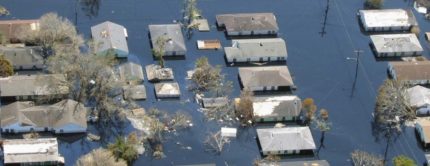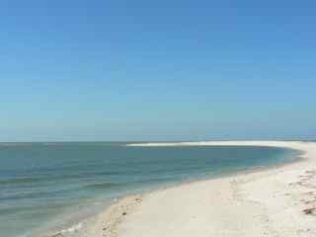While Hurricane/Tropical Storm Isaac hasn’t produced the kind of devastating headlines as Katrina seven years ago, the storm has still offered a study in the unpredictability of nature’s fury, moving far slower than forecasters are used to seeing and dumping so much rain on the Gulf Coast that it threatened to break a dam near the Louisiana-Mississippi border.
That dam, at Lake Tangipahoa in Mississippi’s Percy Quinn State Park, prompted officials to order the mandatory evacuation of as many as 60,000 people from the area so that they could release water at the dam.
Mayor Whitney Rawlings of McComb, Miss., north of the park, told CBS News that there was a “50-50 chance” of the dam failing. He urged people south of the dam to evacuate.
“People need to be moving,” Rawlings told CBS News.
In Louisiana, Tangipahoa Parish President Gordon Burgess issued an emergency alert warning of an “imminent failure” at the dam. Burgess said between 50,000-60,000 people had 90 minutes to evacuate, CBS New Orleans affiliate WWL-TV reports.
A warning from the National Weather Service said a break in the dam would raise the level of the already swollen Tangipahoa River from around 11 feet to 17 feet in Kentwood, La., which is near the state line.
By mid-morning Thursday, Louisiana’s Public Service Commission said 903,000 homes and businesses around the state—about 47 percent of all customers —are without power.
In Picayune, Miss., 62-year-old tow truck drover Gregory Alan Parker was killed when a tree fell on his truck Thursday morning, the second reported death connected to Isaac.
A man in Vermilion Parish, LA, fell approximately 18 feet after climbing a tree for an unknown reason on Tuesday, the Vermilion Parish Sheriff’s Office said. He and two friends had gone to move a car that was under a tree ahead of Isaac when it was still classified as a hurricane.
All along the coast, there were reports of people needing to be rescued. Early Thursday, a Coast Guard helicopter hoisted a couple and their dogs from a home in LaPlace, after storm surge caused the nearby lake to pour into their neighborhood. The couple was taken to New Orleans and reported in good condition.
“The husband and wife and their two dogs were in an area where a lot of houses washed away,” said Lt. Cmdr. Jorge Porto. “They used a flashlight inside the house as a signaling device, which made all the difference in locating them effectively.”
The floodwaters “were shockingly fast-rising, from what I understand from talking to people,” Lt. Gov. Jay Dardenne said. “It caught everybody by surprise.”
Isaac’s maximum sustained winds had decreased to 40 mph and the National Hurricane Center said it was expected to become a tropical depression by Thursday night, meaning its top sustained winds would drop below 39 mph. The storm’s center was on track to cross Arkansas on Friday and southern Missouri on Friday night, spreading rain as it goes.
Meanwhile, water was still trapped between two floodwalls in Plaquemines Parish, a sparsely populated area south of New Orleans that is outside the federal levee system. Officials are considering cutting 10-15-feet-wide holes in a levee to let the standing water drain back into the Mississippi River and marshland, CBS News correspondent Byron Pitts reported from New Orleans.
Along the shores of Lake Ponchartrain, officials sent scores of buses and dozens of high-water vehicles to help evacuate about 3,000 people as rising waters lapped against houses and left cars stranded. Floodwaters rose waist-high in some neighborhoods, and the Louisiana National Guard was working with sheriff’s deputies to rescue people stranded in their homes.


